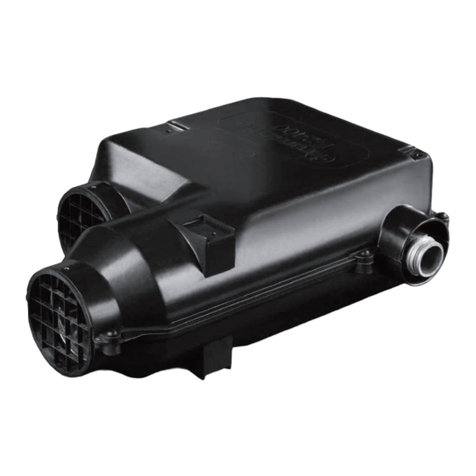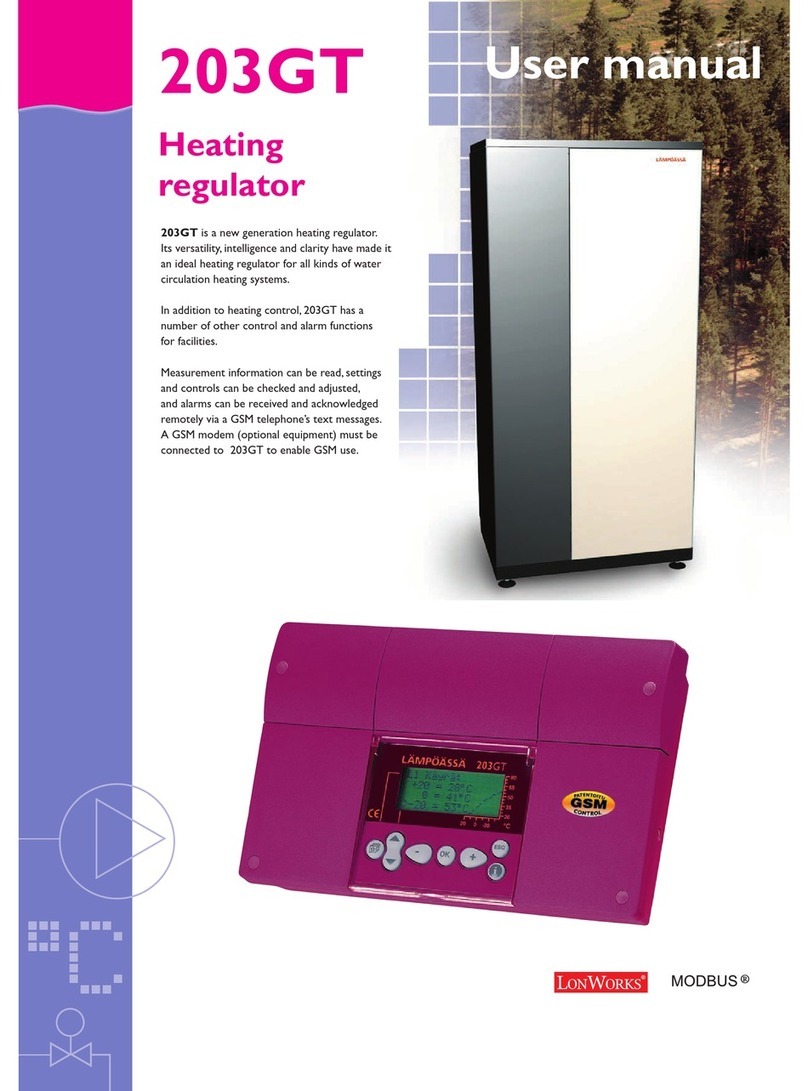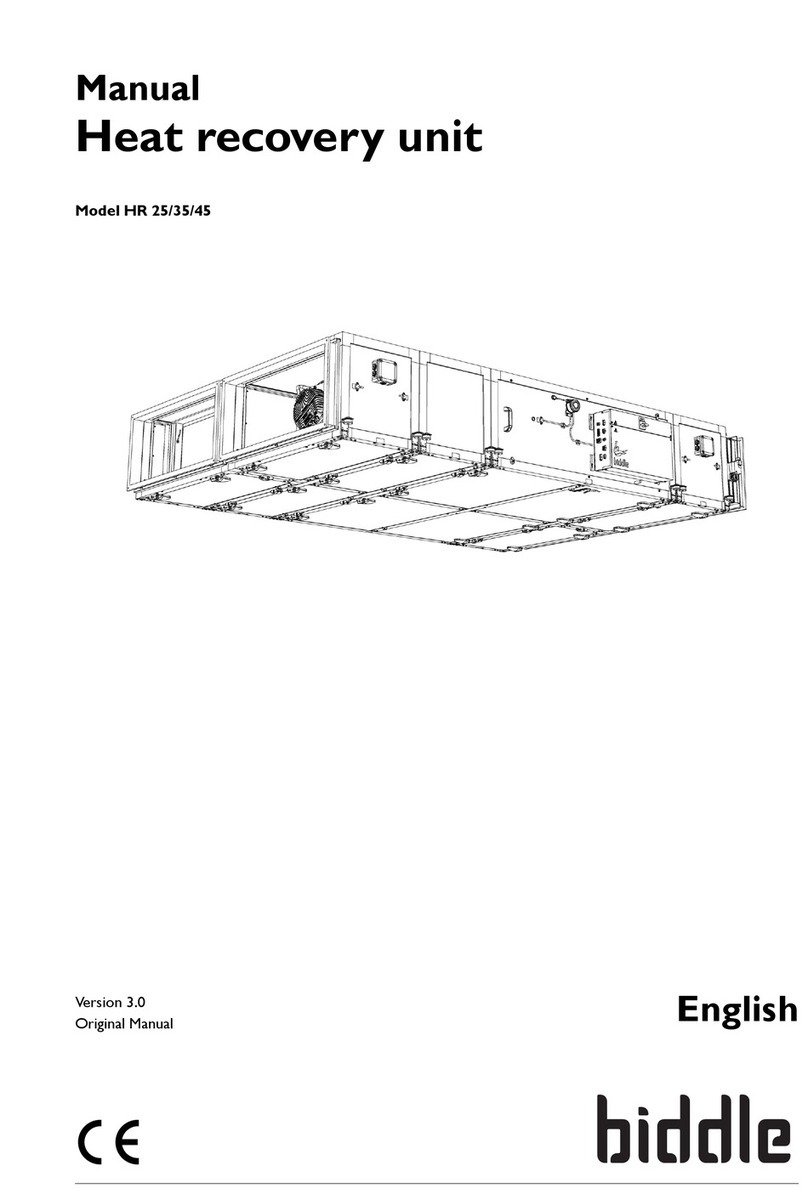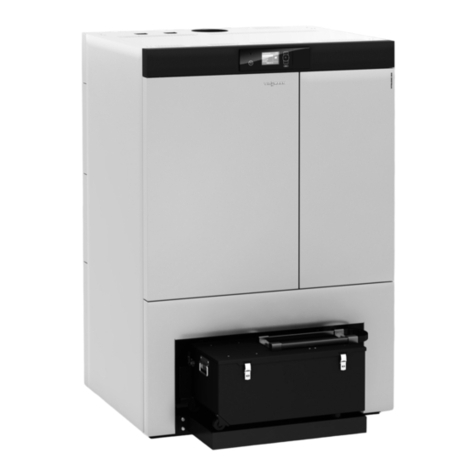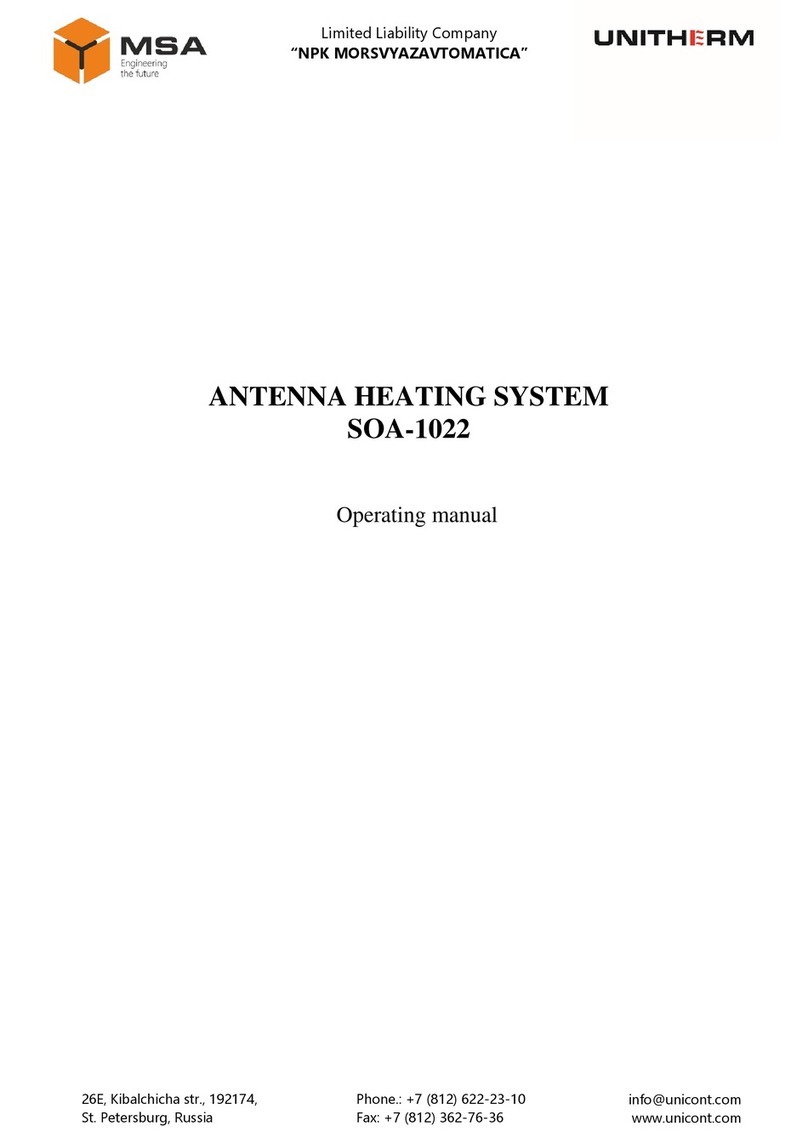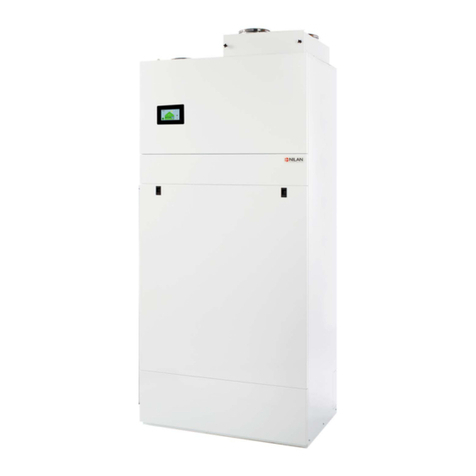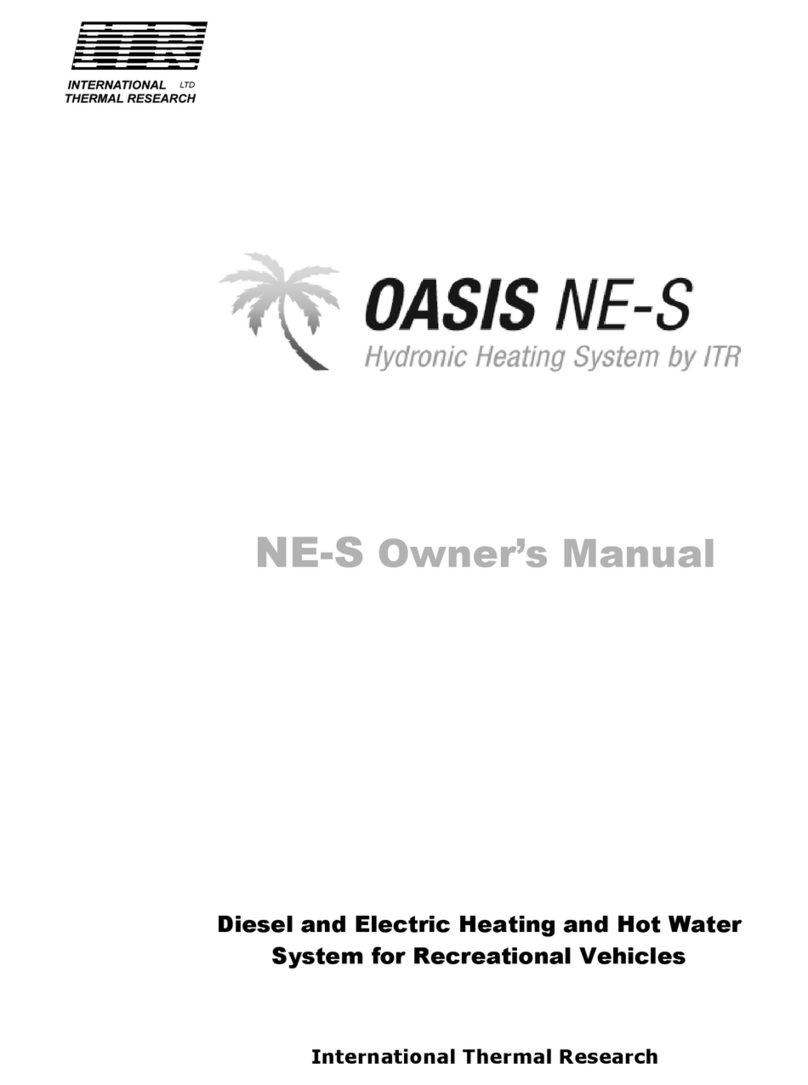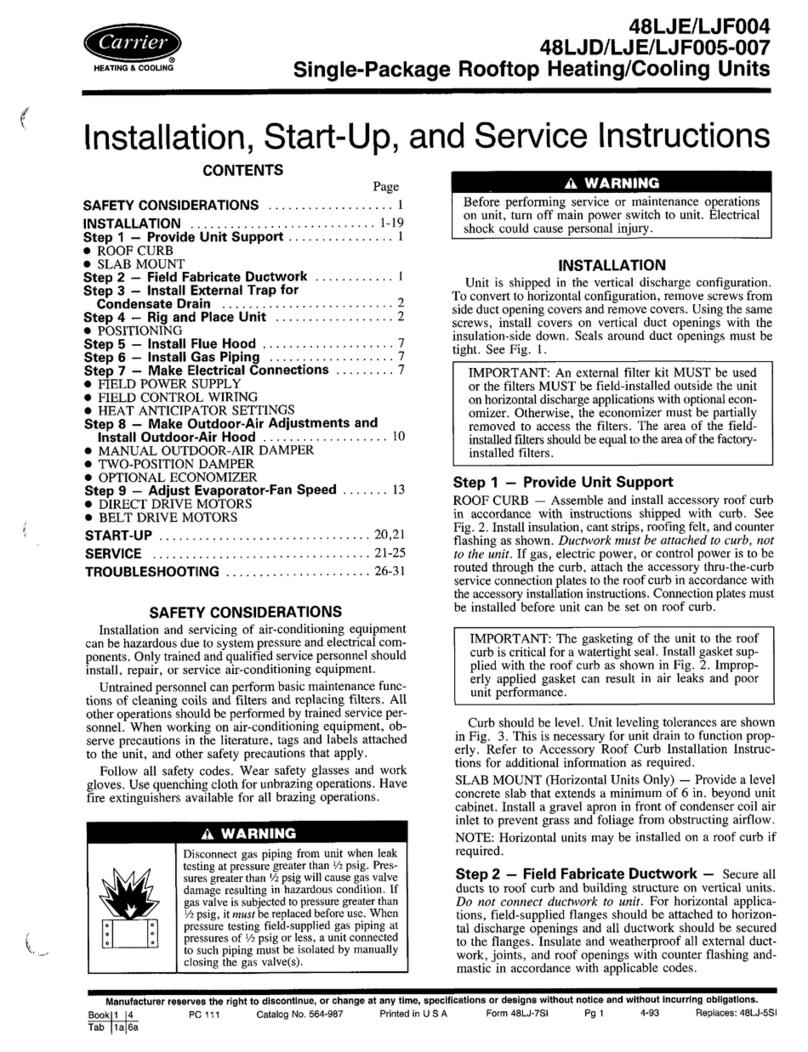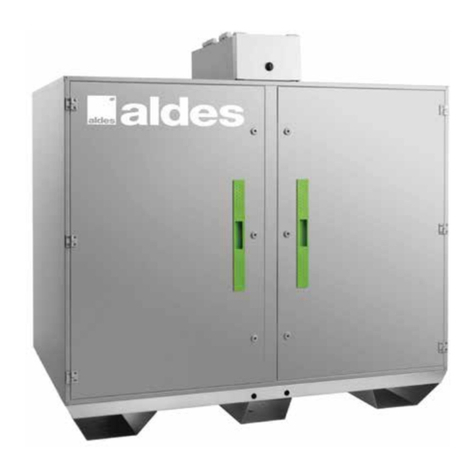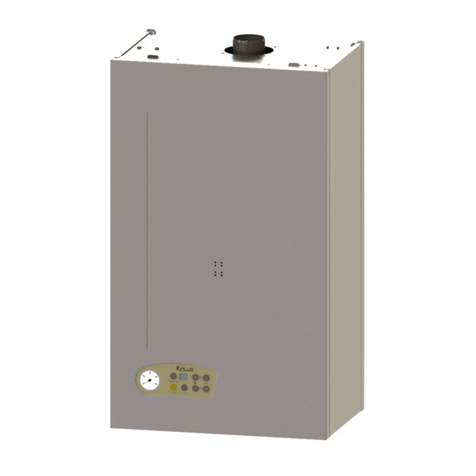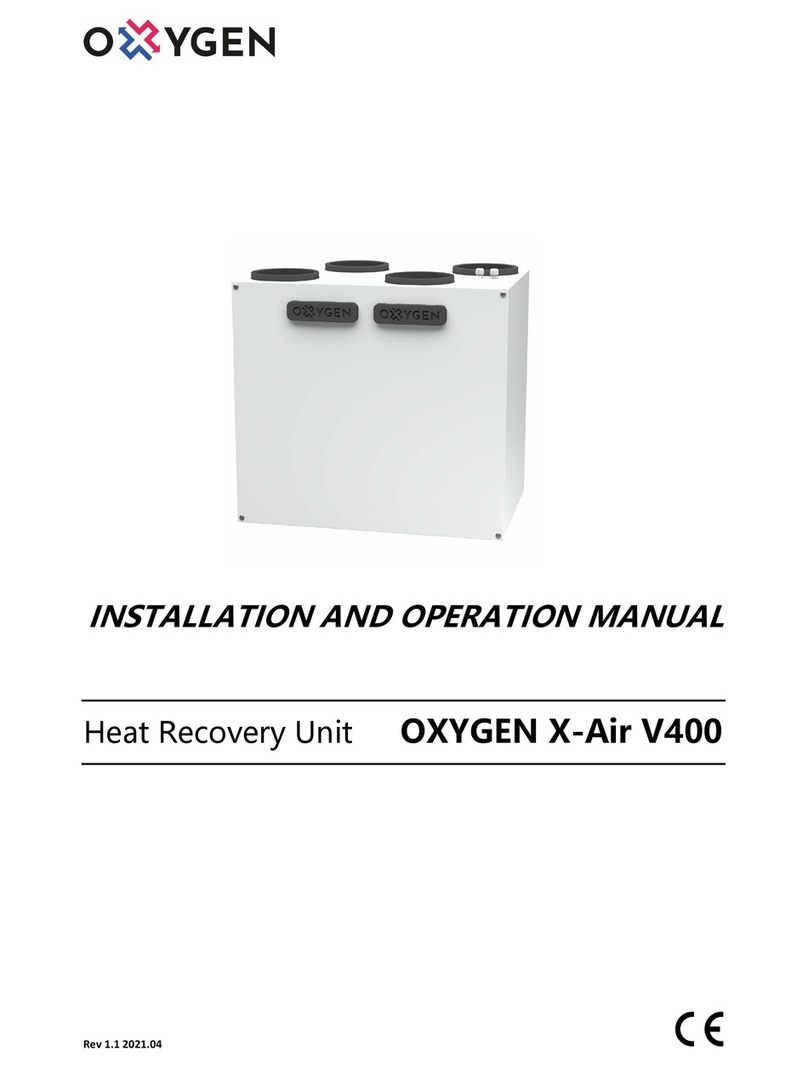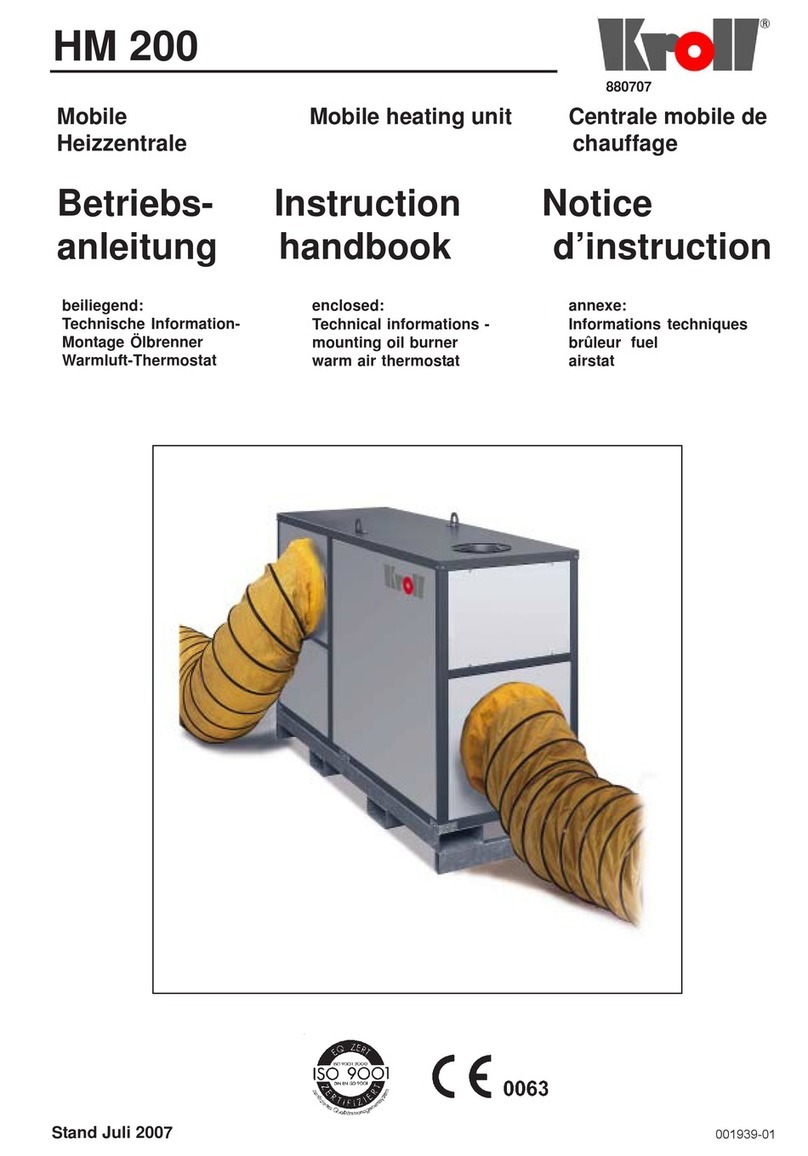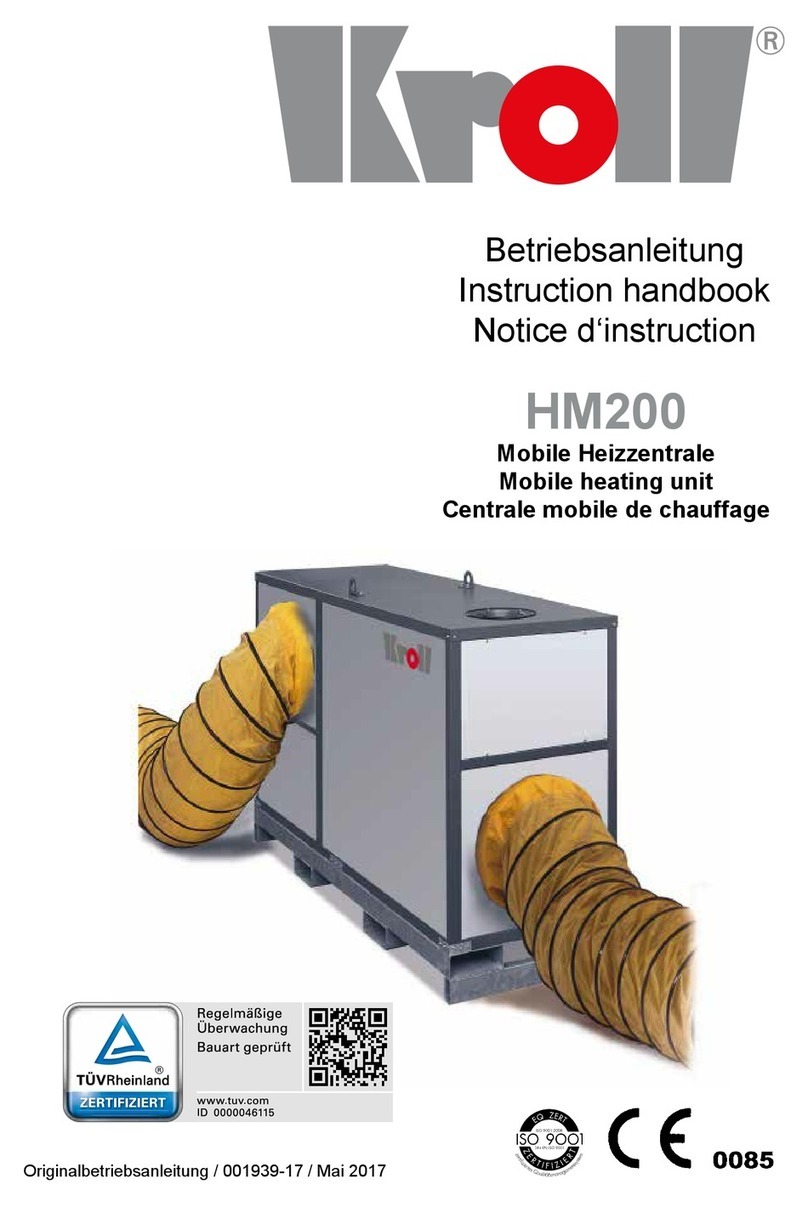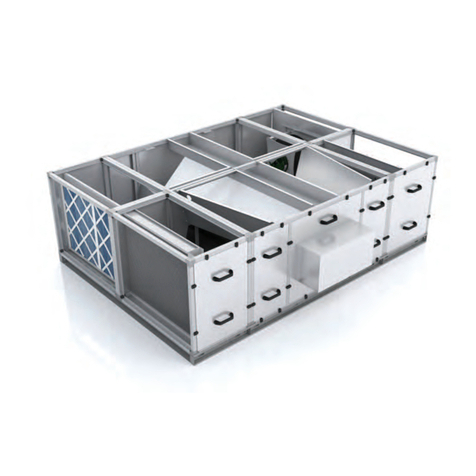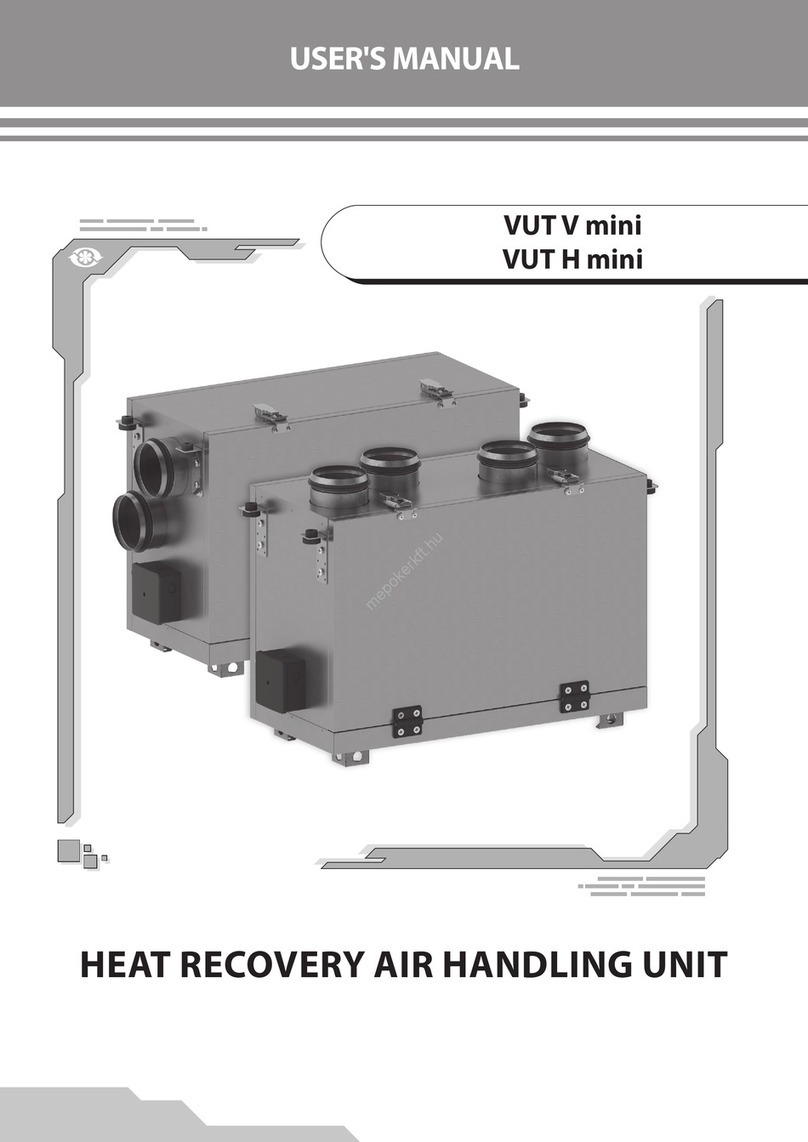Page 8
this alarm will be interlocked with the cooling actuator such that cooling will be disabled until
the condensate is removed.
Connecting hot and cold water services
The unit incorporates a water to air heat exchanger with provision to connect to both
cooling and hot water services.
All connections on the heat exchanger are 15mm copper plain ends at 40mm centres in the
horizontal plane. The connections are identified by a label indicating supply and return
connections on the side of the unit requested by the customer. The coil is designed as
counterflow operation and is used to maximise thermal performance whilst minimising energy
consumption.
The coil connections must be damage free before installing the unit, and care must be taken
not to create any undue stress which may cause a fracture to the copper tails. If specified at
time of order, the unit will come with a factory fitted valve set. For connection to these please
refer to the project specific documentation sent with the product.
Coils must be protected from extreme temperatures that would result in freezing and damage
to the copper pipes.
The maximum operating pressure of the coil is 16 Bar (1600kPa).
It is the installer’s responsibility to check and ensure that any water
treatment required is in place and meets with the requirement of the
project.
It is the installer’s responsibility to ensure all relevant industry standards
and codes of practice are followed and must conform to all statutory
legislation or regulations that are applicable.
Connecting the Electrical Supply
The electrical installation must conform to all relevant Standards.
The equipment is intended to be connected to a 230 VAC 50 Hz, electrical supply.
The power supply must be via a single phase local isolator (customer supplied) with a contact
separation on both Live and Neutral poles of at least 3mm. Please note the isolator must be
fitted within an accessible position and labelled accordingly.
The unit can be supplied with a UK 3 pin plug and 1m flex lead if specified at time of order. It is
the installer’s responsibility to ensure correct connection of the mains wires and installation of
the cable gland (supplied) to secure the cable.
Alternatively, the equipment is provided with a loose cable gland for connection via a suitable 3
core cable from the local fused spur. If the supply cord is damaged it must be replaced by the
manufacturer, it’s service agent or similarly qualified person in order to avoid a hazard.
Access to the connection electrical block is via removing the Controls Enclosure cover.
